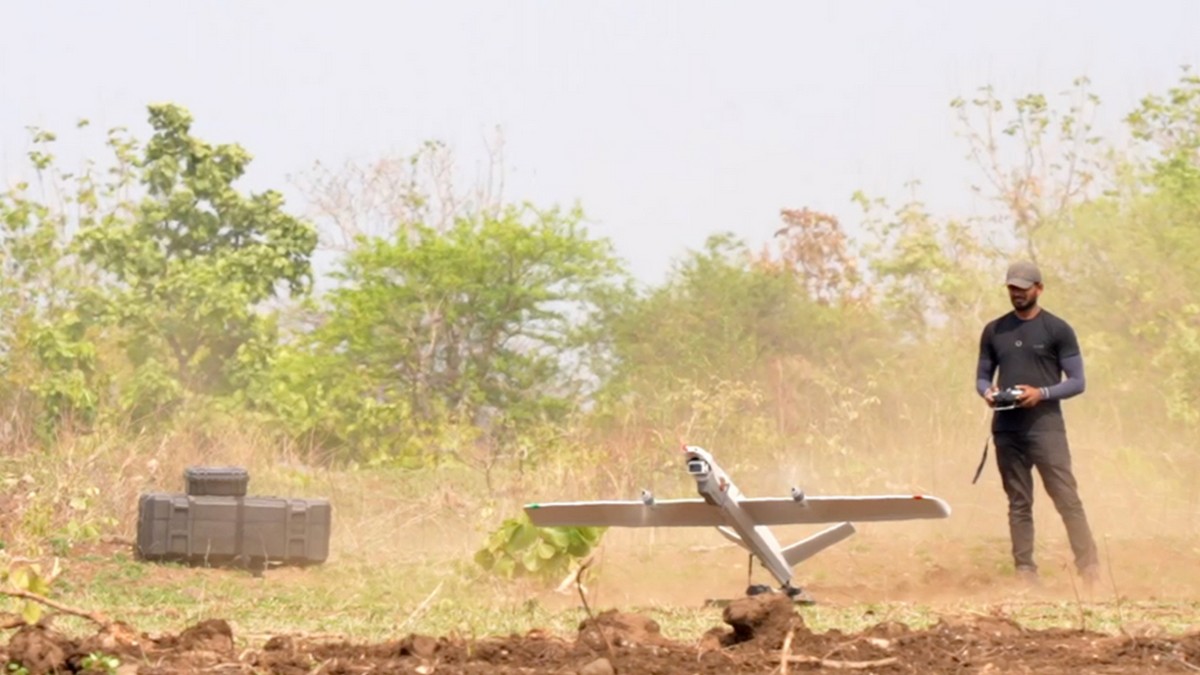The Indian Army has received its first indigenously-made suicide drones.
These unmanned aerial vehicles (UAVs), known as Nagastra-1, are manufactured by Solar Industries Nagpur.
The company in April 2023 bagged an order to supply unmanned aerial vehicle (UAV) Nagastra to the Indian Army, beating competitors from Israel and Poland.
But what do we know about the loitering munition drones?
Let’s take a closer look:
The drones have been designed and developed by Economics Explosives Ltd (EEL), a subsidiary of Solar Industries Nagpur, in association with Bangalore’s Z-Motion.
According to The Times of India, the drones are called loitering munition weapons due to their ability to hover over the target.
The Nagastra-1 has a ‘Kamikaze mode’ in which it can search and destroy any target by crashing into it.
According to India Today, the UAV weighs nine kilos.
They are designed to be carried by ground troops, as per News9.
The drone can carry out precision strikes via GPS with an accuracy of two metres.
It can fly at an altitude of up to 4,500 metres.
India Today reported that its electric propulsion system gives it a low acoustic signature – leaving it nearly undetectable at altitudes over 200 metres.
According to SPS aviation, it has a maximum range of 30 kilometres in autonomous mode.
Impact Shorts
More ShortsThat range is at 15 kilometres when it is operated remotely.
It can hover over a target for 60 minutes.
According to Economic Times, it can hold a 1 kilo warhead.
Its pre-fragmented high explosive warhead allows it to destroy various soft-skinned targets.
It comes equipped with a day-and-night camera for surveillance.
Its abort, reuse and recover mode puts it in a class of its own, as per The Times of India.
When aborted or called back, it makes a soft landing via parachute.
As per India Today, it also comes with a ground control station, communication control, payload and pneumatic launcher.
The company said that Nagastra -1 has an indigenous content of more than 75 per cent.
“After successful completion of pre-delivery inspections, EEL delivered 120 Loiter Munitions to an Army Ammunition Depot,” news agency ANI quoted defence officials as saying.
According to The Times of India, the Indian Army has ordered 480 such drones.
SPS Aviation reported the company is also working an upgraded version of the drone entitled Nagastra-2.
This will have a range of over 25 kilometres and will be able to hover over a target for 90 minutes.
It will be able to carry 2.2 kilo warhead, as per the Economic Times.
These drones have been designed to hit enemy training camps, launch pads, and infiltrators – thus reducing risk to soldiers.
These drones are ideal for targetting terrorists at India’s border.
In 2023, a model of ‘Nagastra -1’ loitering munition was displayed in the Army Commanders conference held in New Delhi.
Drone technology has proved to be a force multiplier in military operations as evident from its application in various recent conflicts across the world, especially in cases of Armenia-Azerbaijan, Syria, strike on oilfields in Saudi Arabia, and the ongoing Russia-Ukraine conflict.
“Even in our context, the recent incidents along the borders have seen a noticeable increase in drone related incidents along the northern borders.”
“Solar Industries have taken initiatives to develop a wide array of weaponised drones to neutralise various targets using gravity drop bombs, guided missiles or using them in a Kamikaze mode. This will go a long way to boost indigenous capability of using drones/ UAVs as war machinery,” company official said.
With inputs from agencies


)

)
)
)
)
)
)
)
)



